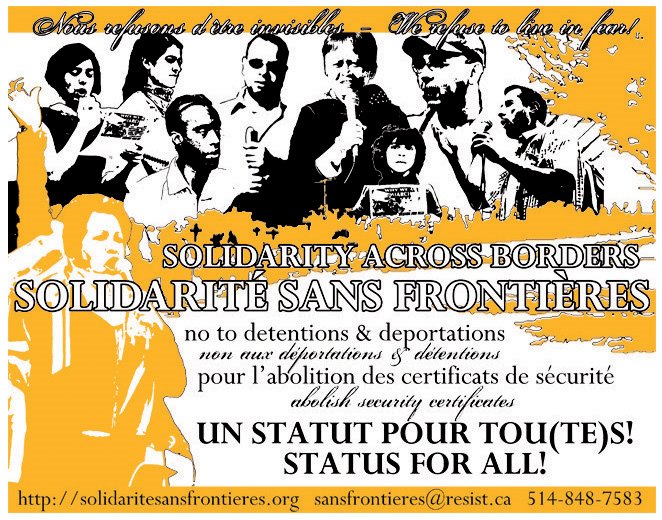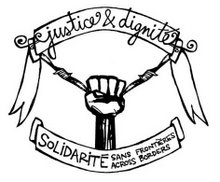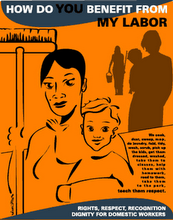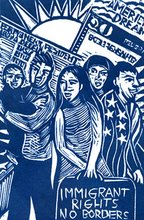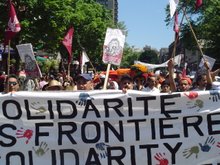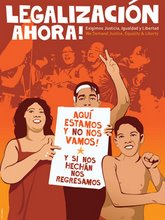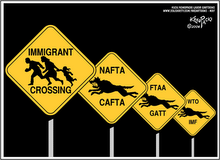Rene Bruemmer, The Gazette
An isolated incident, most people at the schools in the eye of a public tempest opined today. A vicious beating of two white girls at the hands, shoes and boots of a group of girls from another school, most of them black, was a rare occurrence between two institutions who have had civil relations over the years."Same thing happened at my high school when I was growing up in LaSalle," said Mike, the parent of two children at Lester B. Pearson high school who preferred not to give his full name. "Guys would come over to fight us. There have always been these kinds of problems."
But the reassurances come as little comfort to many parents and students in an era where the preponderance of street gangs, guns and YouTube can quickly transform innocuous schoolyard tussle into tragedy.
And the impetus for this beating - one of the victims has admitted to screaming a racially epithet at a group of black girls in response to having ice cubes flung at her - is an example of the racial, linguistic and socio-economic tensions that exist unspoken and are tolerated between the two solitudes at these schools and everywhere else, observers said.
That relations are generally calm between the two schools is almost surprising. Lester B. Pearson High School is among the largest in the English Montreal School Board with 1,500 students, "95 per cent of whom are Italian," one teacher estimated. Many of these students are bussed in to the Montreal North school from the more affluent Riviere des Prairies, and they're educated in English.
Less than a kilometre away is the even larger Ecole secondaire Henri Bourassa, with 2,000 students from a wide variety of ethnic backgrounds, educated in French, and most from Montreal North, which is among the poorest districts in the city.
The average income of those over 15 in the region's federal electoral district was $21,000, according to 2003 census figures. The average household income is $37,000, well below the Quebec average of $50,000.
Montreal North has been classified as one of the city's "hot spots" for crime by Statistics Canada, where the incidence of violent crime is significantly higher than in other neighbourhoods.
"They hired security guards to chase off the gang members who used to hang out by the exits in their luxury cars," said Grade 11 Henri Bourassa student Daniel. "The girls used to run out to see them. They still come around, but they turn the music down lower, and they stay farther from school."
Yet incidents between the schools are relatively rare. Three years ago, the same racial epithet between two students at Lester B. Pearson provoked the rage of more than 200 students at Bourassa, who gathered outside Lester B. Pearson and chanted their high school slogan in a show of force and threat.
Students at Henri Bourassa, both black and white, wrote last week's incident off to a few bad apples. Racial tension was rare, most said. If anything, it would be more of an "French against English" thing.
"The only bad thing is there are a lot of guns in this neighbourhood," said Grade 11 student Gianluca. "Things can go bad quickly." Fights in the school itself are common, "especially between girls," he said.
"We're always in groups - it's safer," said Daniel. "But is has a kind of ghetto effect, where we don't talk to each other."
One teacher at Lester B. Pearson who asked not to be named disputed the "isolated incident" theory.
"Something has to be done," he said. "(This type of incident) is an annual thing. ... There is a lot of racial tension. I hear it from the kids. And there's socioeconomic tension."
(Girls from Bourassa told reporters they dislike Lester B. Pearson students because "they look down on us.")
"But all we do is keep ignoring the issue, and say 'It's all going to blow over.'
"It's not going to blow over until a kid gets killed in the park and people finally do something."
Lester B. Pearson has to make an effort to "build bridges" by setting up meetings between the schools, and organizing multicultural days for students who have had little exposure to different ethnic backgrounds, the teacher said. Students at Lester B. Pearson aren't allowed to leave school grounds until they reach Grade 9.
"And it's always the Grade 9 kids, who aren't properly socialized in society, who get into trouble.
"I call it the disease," he said. "It's a virus that keeps spreading until someone does something about it. If we don't confront it, it will continue."
Much of the blame falls on parents and grandparents, he noted, who either don't teach their children to respect others, or pass on their own prejudices.
Two Grade 11 girls from Henri Bourassa who said they had seen little fighting, had a different theory for the the perceived scope of the problem at their school.
"When are all the journalists going to stop coming," asked Sasy, 16, gesturing toward the television trucks and cameras parked in front of her school. "I want them to go away so things can get back to normal.
"They're stressing me out."
